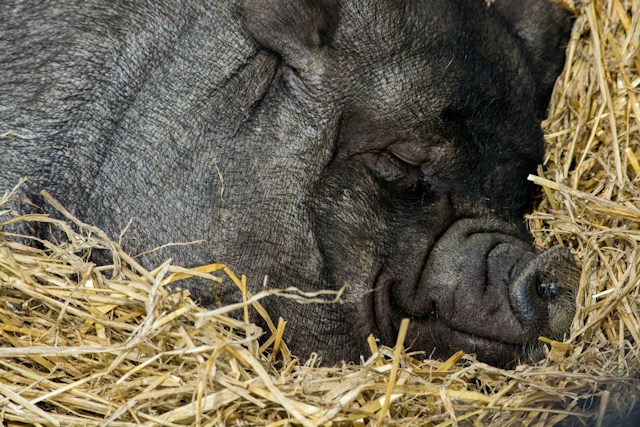What are safe bedding materials for your guinea pig?

When it comes to creating a comfortable and healthy environment for your guinea pigs, choosing the right bedding is paramount. Your adorable pets spend a considerable amount of time in their cages, and the bedding you select can significantly affect their well-being. With the myriad of choices available, it can be overwhelming to decide which bedding material is the best for your furry companions. In this comprehensive guide, we’ll delve into the various types of bedding options, highlighting their benefits and drawbacks. We aim to help you make an informed decision so that your guinea pigs can thrive in a safe, clean, and cozy habitat.
The Importance of Choosing the Right Bedding
Before we explore the bedding types, let’s understand why the right choice is crucial for your guinea pig’s health. Bedding serves multiple purposes: it absorbs waste, reduces odors, provides comfort, and can even impact the respiratory health of your pets. Poor bedding choices can lead to problems such as skin irritations, respiratory issues from dust, or gastrointestinal obstructions if ingested. Your guinea pigs’ bedding should be absorbent, comfortable, and safe to ensure their enclosure remains dry and clean.
Cela peut vous intéresser : Why do some dogs fear thunderstorms?
Additionally, bedding plays a role in your guinea pigs’ behavioral needs. These small animals enjoy burrowing and nesting, so the material should allow them to exhibit these natural behaviors. We’ll now explore the various types of bedding to determine which might be the best bedding for your cuddly pets.
Wood Shavings: The Traditional Choice
Wood shavings, particularly aspen bedding and pine shavings, have been a traditional choice for small animal bedding for many years. It’s crucial to note that not all wood shavings are safe for guinea pigs. Cedar shavings, for example, can be harmful due to their strong scent and oils which can cause respiratory and liver issues.
A voir aussi : How to care for a senior bird?
Aspen Bedding
Aspen bedding is a good option because it’s dust free and doesn’t contain the aromatic oils found in pine and cedar. It’s kiln dried, reducing moisture content and preventing mold growth. Plus, aspen bedding is relatively inexpensive and easy to find.
Pine Shavings
Pine shavings can be used if they are kiln-dried to remove the harmful phenols (aromatic oils) and dust. However, they may not be as absorbent as other options, and you should be diligent in ensuring the product is safe and appropriate for guinea pigs.
Wood shavings require regular cleaning and replacement, usually once or twice a week, to maintain a sanitary environment for your guinea pig. Although they can be cost-effective, the frequency of changing the bedding can add up in terms of time and money.
Paper Bedding: Soft and Absorbent
Paper bedding has gained popularity due to its soft texture and high absorbency. It’s a safe choice for guinea pigs since it’s almost always dust free and doesn’t contain the harmful chemicals or oils found in some wood shavings.
Recycled Paper Bedding
Recycled paper bedding is made from post-consumer waste, making it an eco-friendly option. It’s often treated to be extra absorbent and is usually comfortable for guinea pigs to walk on. This type of bedding is also available in different forms, such as crumbles or pellets.
Custom Paper Bedding
There are also custom paper beddings formulated specifically for small pets. These can include added baking soda for odor control or be designed to expand when wet, increasing absorbency. Such products often come in various colors, which can be visually appealing but always ensure that the dyes used are pet-safe.
With paper bedding, monitoring for dampness is vital, as it should be changed before it becomes overly saturated. While paper bedding can be more expensive than wood shavings, it’s often worth the investment for the comfort and health of your pets.
Fleece Liners: A Reusable and Cozy Option
Fleece liners and fleece bedding represent an increasingly popular alternative to disposable bedding. High-quality fleece liners are designed to wick away moisture from the surface down to an absorbent layer beneath, keeping your guinea pigs dry.
Advantages of Fleece Liners
Fleece is gentle on guinea pigs’ feet and can be more comfortable than other bedding types. It doesn’t produce dust, making it a great option for those concerned about respiratory health. Another significant advantage of fleece is that it’s reusable; after a quick shake to remove droppings, it can be washed and returned to the cage, reducing waste and long-term costs.
Considerations for Fleece Bedding
To successfully use fleece, you must prepare it properly by washing it several times to increase its wicking ability. You’ll also need to set up a proper layering system to ensure absorbency and ease of cleaning. Fleece liners require more frequent cleaning, usually a few times a week, to maintain a hygienic environment.
Alternative Bedding Options
Beyond the common bedding types, there are other materials you can consider. Each comes with its own set of advantages and considerations.
Hemp Bedding
Hemp bedding is becoming a sought-after alternative due to its high absorbency, low dust, and biodegradability. It’s also naturally antimicrobial, which can help control odors and bacteria growth.
Bath Mats
Some guinea pig owners use bath mats as a bedding surface due to their softness and absorbency. When selecting bath mats, choose those without rubber backing, which could be chewed and ingested by your pets.
Customized Bedding Mixtures
You might find that a combination of bedding types works best for you and your guinea pigs. For example, using paper bedding for absorbency and wood shavings for burrowing can cater to your pets’ needs while balancing cost and maintenance.
Conclusion: Selecting the Best Bedding for Your Guinea Pigs
In conclusion, the safety and comfort of your guinea pigs are paramount when selecting their bedding. Whether you opt for aspen or pine shavings, paper products, or fleece liners, each choice has its benefits and considerations. Remember, the best bedding is not just about comfort but also about ensuring a healthy environment for your pets. It’s essential to consider absorbency, dust levels, ease of cleaning, and the potential for ingestion. Regular maintenance and observation will help you identify the bedding that works best for your guinea pigs’ needs and your lifestyle.
As you make your choice, consider the bedding’s impact on your guinea pigs’ health, your time, and your budget. With the right bedding, you will not only provide a soft and clean home for your pets but also peace of mind for yourself, knowing that your furry friends are living in a safe and nurturing environment.
